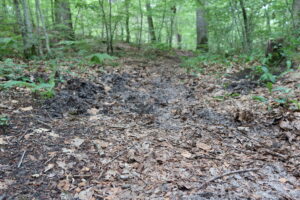What Are the Three Principles of the Circular Economy?
What is the circular economy?
Before looking at the three principles of the circular economy, let’s understand what is the linear economy and define then the circular economy.
Known as a ‘take-make-waste’ model, the linear economy is based on resource extraction, product creation, distribution, use, and waste.
The linear economy is unsustainable because it causes environmental damage, such as resource depletion, pollution, biodiversity loss, or climate change.
In opposition, in the circular economy, resources are used as long as possible and recycled at their end-of-life. The circular economy is inspired by nature in that closed loops, minimal waste, and efficiency characterize its model.

Forests are good examples of closed loops. Trees lose their leaves and dead wood, which form litter. This organic matter becomes food for wildlife, which decomposes everything into humus (soil forestry), full of nutrients for other plants. Instead of being wasted, leaves and dead wood became resources for other plants.
What are the three principles of the circular economy?
According to Ellen MacArthur’s works, the circular economy relies on three principles:
1) Minimizing waste and pollution by design
By design, products, services, and systems minimize resource use, waste generation, and pollution. How to design such products, services, and systems?
- Through the use of sustainable materials: using materials that are non-toxic, biodegradable, or can be easily recycled or repurposed,
- Through efficient production processes: using lean manufacturing techniques or renewable energy sources,
- And through closed-loop systems: designing products and systems that others can easily disassemble, repair, refurbish, reuse, or recycle.
2) Extending the useful life of products and materials
This principle focuses on products and materials end-of-life by keeping them in use as long as possible. Therefore, products and materials are designed for durability, and one can extend their life by repairing, refurbishing, reusing, and recycling them.
3) Regenerating natural systems
Regenerating natural systems is also an essential principle of the circular economy. It involves regenerating soil, water, and biodiversity, through the use of sustainable practices and technologies. For example:
- Use farming practices that promote soil health, conserve water, and protect biodiversity,
- Use renewable energy to generate electricity using solar, wind, or hydropower,
- Design and build green infrastructure (buildings and transportation), to protect and conserve biodiversity or lower pollution,
- Manage water sustainably, such as implementing rainwater harvesting or recycling greywater.
In a word, the circular economy is a win-win solution for both the environment and the economy. As opposed to the linear model (‘take-make-waste’), the circular economy decreases resource consumption and pollution.
Captain Forest encourages all economies to be circular!
Will you transform your business to embrace circularity? Please comment.




